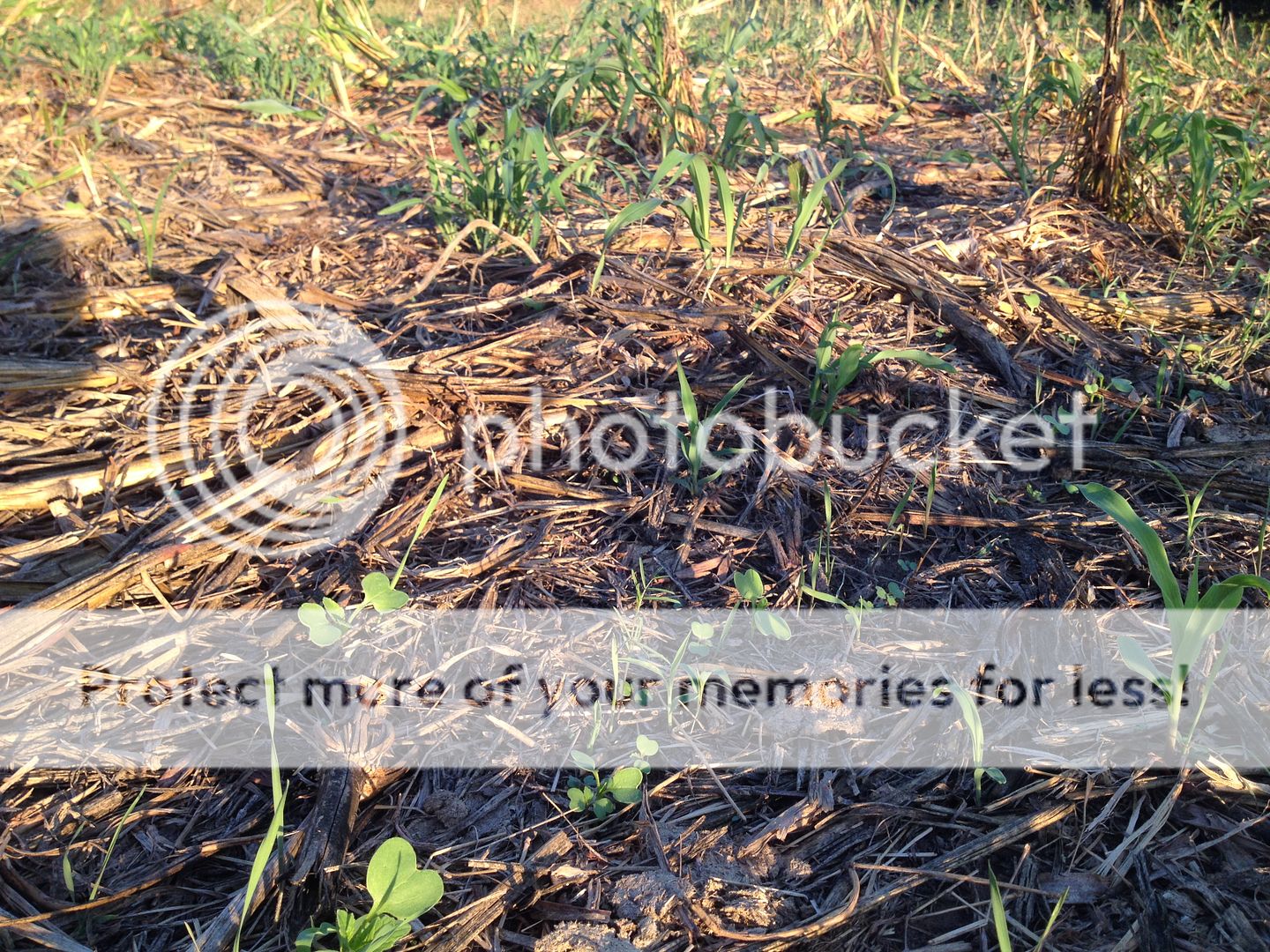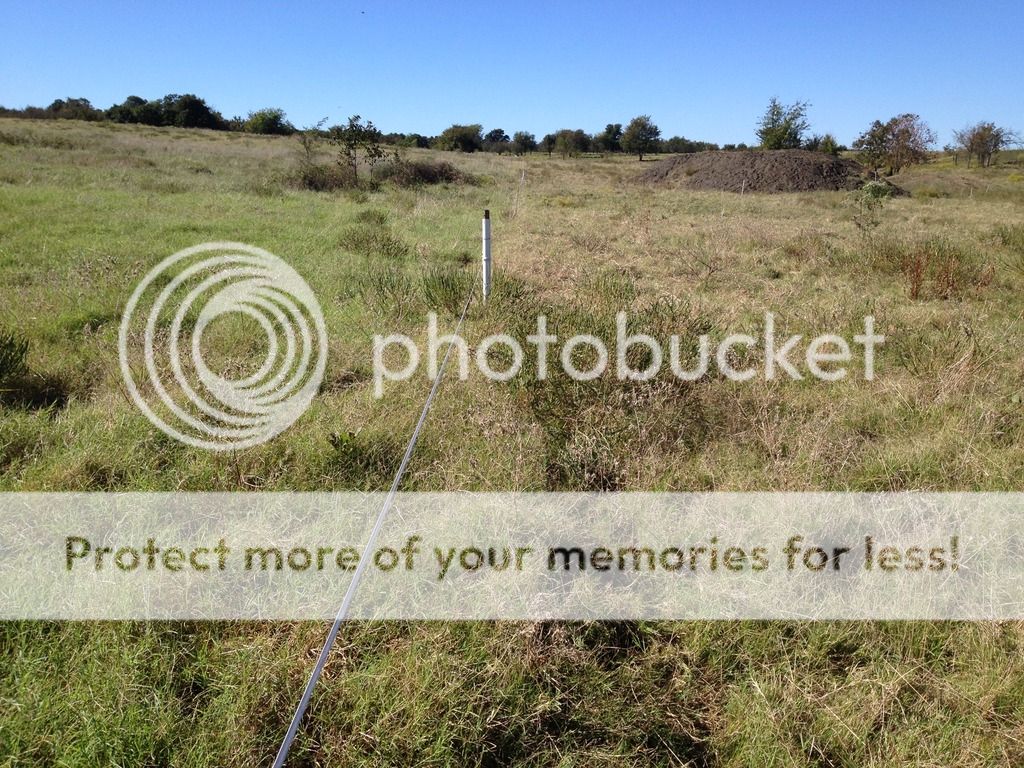Thank you for the compliment!
Turkeys and crows are attracted to manure with seeds in it. Some of the cow harvested grain becomes bird food....but more importantly dung is shredded for faster soil recycling. Dung beetles are out and active as well. Diversity of life begets diversity of life and that impacts soil life and health.

We are 4 for 4 on fall babies and that is very good despite the presence of black-headed vultures and the coincidence of Mexican vulture migration. Babies can make herd moves problematic. Most of the herd moved through the lot early morning. A couple cows and their new babies wouldn't go through the lot, so I made a temporary lane with polywire and moved them through a different gate that morning. One baby stayed behind all day and hid in the brier cover of the destination plot....saw him while drilling. His mother came back for him at sunset, then I drove both of them on foot through the lot and into the new pasture just before dark and before he had time to fill his belly of milk. Most herd moves take less than an hour....but some can take a day or more with babies on the ground. Babies use the brushy parts of pasture to avoid predators (vultures).
The last summer annual planting is being grazed...it is a new pond reclaimed land planting. Opened the hotwire around the new pond and watched cattle filter into it during the day. When one or two cows go, the rest of the herd follows...then everyone is there until it's gone....so I get a 'mob' effect there from nothing more than a 'preferred forage' planting. I broadcast seed from drill cleanout and some of the ryegrass mix onto that area while it rained that evening for winter soil stabilization. Took this picture while drilling the pasture they were in the last 12 days....mowing of bermuda or forbs not needed....white clover patch (middle of pic) is recovering rapidly.

Noticed the native winter annuals and forbs emerged last week in cattle loafing areas and thin pasture. That is the Nature's signal of changing seasons.
The drilled annual mix is emerging and will be stable at the 5 leaf stage. Temps have remained hot and dry up to this recent cool front which brought an effective 0.3" of rain (effective meaning downpour and moderate rain). Weather pattern is supposed to settle into the 60s low and 80s high range with ample sunshine. That should precipitate ample brassica growth before first frost.....but doesn't do much to spur daylight deer movement.

Egyptian wheat, sorghum and millet are recovering from grazing. They will provide partial shade to aid establishment of winter annuals and provide stockpiled dry forage for cattle in winter. Look closely and new growth of chicory and perennial clovers can be seen.

90% of acres to be drilled are done. The remaining plantings will be to broadcast a ryegrass mix (plus, fescue, red clover, white clover, chicory, turnips and radish) into weedy areas as the herd is moved through stockpiled pastures. The main concerns and items to monitor are: 1) fall armyworms and 2) sufficient moisture to recharge subsoils. Worm damage is normally minimal because of our insect predator population and sufficient residual pasture height for habitat of insect predators. Ample recharge of subsoil moisture is most important because if it is inadequate, that can lead to severe drought in 2017. Cattle won't return to pasture plantings for about 75 days and won't have access to the plot plantings until about 100 days.....more than ample time to stockpile sufficient growth and allow for full plant establishment.
If something new develops, then I will update this thread.
Turkeys and crows are attracted to manure with seeds in it. Some of the cow harvested grain becomes bird food....but more importantly dung is shredded for faster soil recycling. Dung beetles are out and active as well. Diversity of life begets diversity of life and that impacts soil life and health.

We are 4 for 4 on fall babies and that is very good despite the presence of black-headed vultures and the coincidence of Mexican vulture migration. Babies can make herd moves problematic. Most of the herd moved through the lot early morning. A couple cows and their new babies wouldn't go through the lot, so I made a temporary lane with polywire and moved them through a different gate that morning. One baby stayed behind all day and hid in the brier cover of the destination plot....saw him while drilling. His mother came back for him at sunset, then I drove both of them on foot through the lot and into the new pasture just before dark and before he had time to fill his belly of milk. Most herd moves take less than an hour....but some can take a day or more with babies on the ground. Babies use the brushy parts of pasture to avoid predators (vultures).
The last summer annual planting is being grazed...it is a new pond reclaimed land planting. Opened the hotwire around the new pond and watched cattle filter into it during the day. When one or two cows go, the rest of the herd follows...then everyone is there until it's gone....so I get a 'mob' effect there from nothing more than a 'preferred forage' planting. I broadcast seed from drill cleanout and some of the ryegrass mix onto that area while it rained that evening for winter soil stabilization. Took this picture while drilling the pasture they were in the last 12 days....mowing of bermuda or forbs not needed....white clover patch (middle of pic) is recovering rapidly.

Noticed the native winter annuals and forbs emerged last week in cattle loafing areas and thin pasture. That is the Nature's signal of changing seasons.
The drilled annual mix is emerging and will be stable at the 5 leaf stage. Temps have remained hot and dry up to this recent cool front which brought an effective 0.3" of rain (effective meaning downpour and moderate rain). Weather pattern is supposed to settle into the 60s low and 80s high range with ample sunshine. That should precipitate ample brassica growth before first frost.....but doesn't do much to spur daylight deer movement.

Egyptian wheat, sorghum and millet are recovering from grazing. They will provide partial shade to aid establishment of winter annuals and provide stockpiled dry forage for cattle in winter. Look closely and new growth of chicory and perennial clovers can be seen.

90% of acres to be drilled are done. The remaining plantings will be to broadcast a ryegrass mix (plus, fescue, red clover, white clover, chicory, turnips and radish) into weedy areas as the herd is moved through stockpiled pastures. The main concerns and items to monitor are: 1) fall armyworms and 2) sufficient moisture to recharge subsoils. Worm damage is normally minimal because of our insect predator population and sufficient residual pasture height for habitat of insect predators. Ample recharge of subsoil moisture is most important because if it is inadequate, that can lead to severe drought in 2017. Cattle won't return to pasture plantings for about 75 days and won't have access to the plot plantings until about 100 days.....more than ample time to stockpile sufficient growth and allow for full plant establishment.
If something new develops, then I will update this thread.







